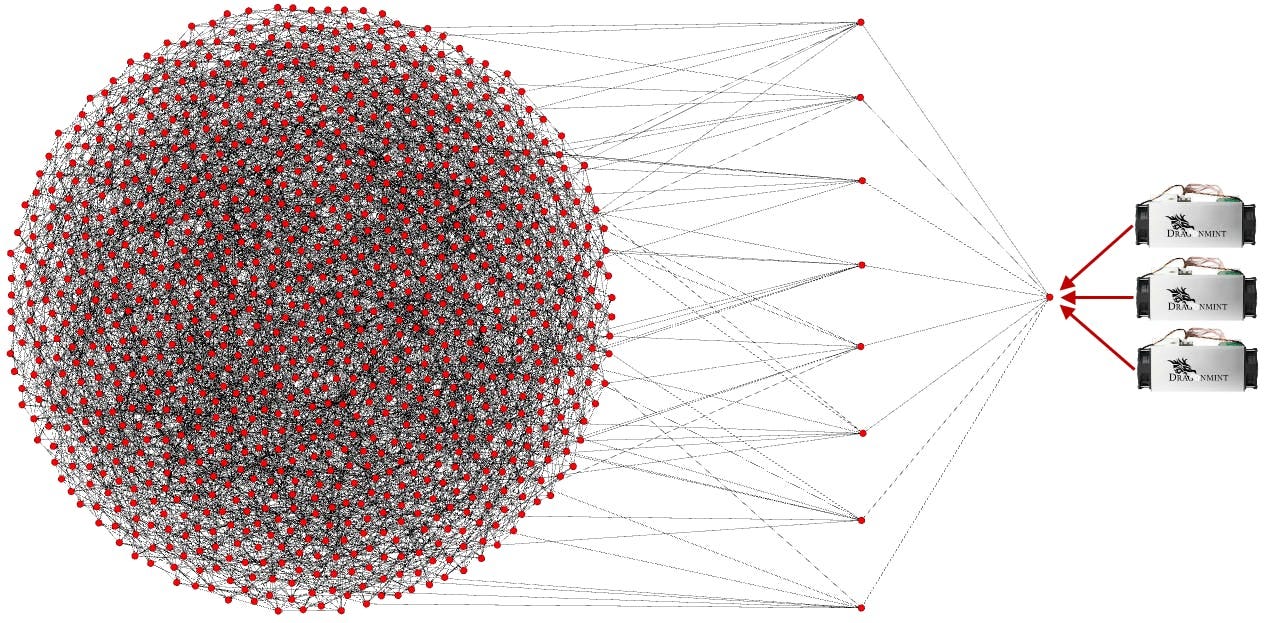September Updates
What's new at SNI?
After finishing our redesign in July, our focus after turned to adding more content to the ever-expanding SNI library. Here are some of the highlights from August and September.
Library
“The Quality of Money” (2009) by Philipp Bagus
While most analyses of money focus on quantitative concerns, Philipp Bagus focuses on the qualitative properties that make good money.
“Rights, Remedies, and Security Models” (2004) by Nick Szabo
Nick Szabo draws from English common law to think about issues in access and security of computer resources.
“The Coming Jurisdictional Swamp of Global Internetworking” (1994) by Douglas Barnes
In this Cypherpunk-era talk, Douglas Barnes thinks through the implications of anonymous online communications in a digital world of overlapping jurisdictions.
Money: Sound and Unsound (2010) by Joseph T. Salerno
Joseph T. Salerno’s treatise is a thorough examination of what makes money truly sound (based on market choice), and how government intervention leaves money unable to function properly.
“Bitcoin Is Worse Is Better” (2011) by Gwern Branwen
Prolific online researcher Gwern looks at what it took for Bitcoin to come into existence and why its architecture works, even if it makes some cryptographers scratch their heads.
Web version of The Ethics of Money Production (2008)
Jörg Guido Hülsmann’s magnificent book, The Ethics of Money Production, is now available to read online in your browser. This book explores the morality of sound money and the immorality of fiat money. We especially recommend chapter 13, “The Cultural and Spiritual Legacy of Fiat Inflation,” which helps readers understand the common bitcoiner sayings, “bitcoin fixes this” and “fix the money, fix the world.”
“The Beauty of ECash” (1994) by Hal Finney
In an early essay on digital cash, Hal Finney thinks about how different mathematical constructs could be used to make digital cash beautiful and desirable as a collectible.
“Delegation and Agreement Based Certification Policy” (1997) by Nick Szabo
Nick Szabo explores the nuances of trust, delegation, and policy in digital certification systems, proposing a contract-based approach that emphasizes specific, enforceable agreements over vague notions of trust.
“The GNU Manifesto” (1985) by Richard M. Stallman
In his classic manifesto, Richard M. Stallman lays out a defense of his GNU (not Unix!) principles for free software.
“Bitcoin, what took ye so long?” (2011) by Nick Szabo
Nick Szabo explores the social and economic reasons why it may have taken bitcoin so long to develop.
“Bit Gold Markets” (2005) by Nick Szabo
Szabo builds on his Bit Gold concept with some ideas on how a market mechanism could help turn digital stamps (puzzle solution bits) into a fungible currency.
Legal Foundations of a Free Society (2023) by Stephan Kinsella
In this career-spanning collection of essays, Stephan Kinsella offers one of the most thorough treatments of libertarian legal theory, with emphasis on argumentation ethics, the title-transfer theory of contract, estoppel, and intellectual property.
“Steganography No Solution” (1993) by Hal Finney
Hal Finney discusses the limitations of relying solely on cryptography and steganography to achieve digital privacy and freedom, arguing that political action is necessary to overcome potential government restrictions on these technologies.
“Why Remailers I” (1992) by Hal Finney
In this essay from the Cypherpunk mailing list, Hal Finney explains the importance of remailers and anonymous communication technologies for empowering individuals and balancing power between people and large organizations.
“Why Remailers II” (1993) by Hal Finney
In an additional essay on the topic, Finney defends the advantages of anonymous communication, where users can choose what information is given out.
“How to Share a Secret” (1979) by Adi Shamir
In this paper, Adi Shamir introduces his well-known Shamir's secret sharing scheme, which allows a cryptographic secret to be broken into multiple shares that require a quorum to recreate the master secret, with mathematical certainty. Today, this is used by some bitcoin security schemes, such as SLIP-39.
“Introduction to Algorithmic Information Theory” (1996) by Nick Szabo
Nick Szabo gives an introduction to Kolmogorov complexity, which analyzes the mathematics of information, allowing for new ways to look at the transmission of a wide range of phenomena, from computer communications to biology to art to law and tradition.
Mempool
“Toward a Node World Order” (2022) by Michael Goldstein
In this sprawling essay, Michael Goldstein looks at the fundamental problems in uncertainty that money addresses and how bitcoin nodes create certainty better than any money in history, and further, what this implications this may have on politics and society.
“Bitcoin Miners Beware: Invalid Blocks Need Not Apply” (2018) by StopAndDecrypt
Bitcoin is not a miner democracy, and StopAndDecrypt shows how the bitcoin network, through full nodes, creates an “impenetrable fortress of validation,” that prevents any miner from being able to cheat or change the system.
Translations
Additional Satoshi Emails
As previously announced, public Satoshi emails that had previously been missing from our archives were added.
P2P Research List Emails
It was brought to our attention that the Complete Satoshi archive of Satoshi's public writings was, in fact, incomplete and missing Satoshi's emails from the P2P Research List.
“Everyone’s a Scammer” Turns 10
In September 2014, SNI president Michael Goldstein, wrote “Everyone’s a Scammer,” which implores people to take seriously the long term implications of holding an undervalued currency expected to take over the global economy. Ten years later, it remains essential bitcoin reading.
The Satoshi Nakamoto Institute is advancing and preserving bitcoin knowledge. To do so, we rely on the generous contributions of readers like you. If you have gained value from reading and exploring the SNI website, please consider donating to help us continue this mission.



